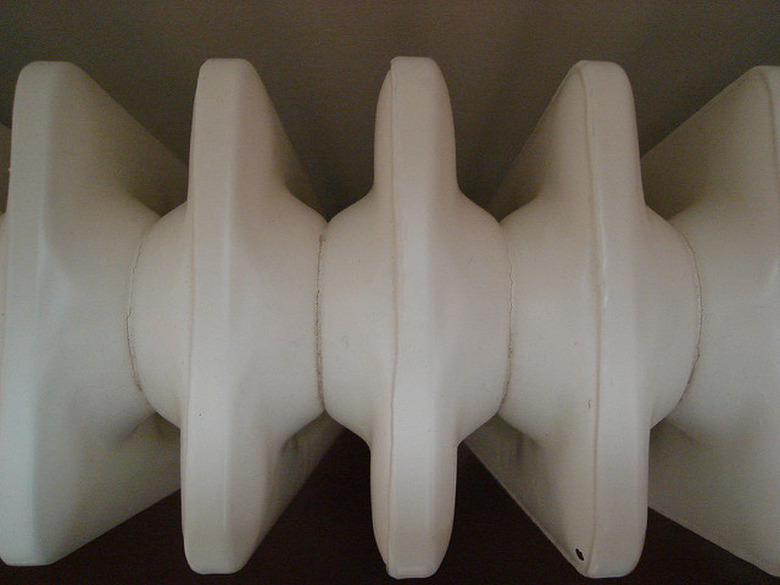How Much Electricity Do Oil Filled Heaters Use?
The bulk of electric space heaters generate heat with a resistive element, and oil-filled heaters are no exception. They are arguably more economical than exposed-element heaters, because the energy they generate goes into the oil rather than being radiated — and lost — throughout the room. Of course, the oil also radiates heat, but it does so at a slower rate. The heating element consumes as much electricity as that of any resistive heater when it's on, but thanks to the heat sink created by the oil, that isn't all the time. As a result, an oil heater uses less electricity in the long run than an exposed-element heater does under normal circumstances.
Oil Heater Basics
Oil Heater Basics
A typical oil heater is a fairly simple device. It consists of a closed coil system filled with oil — usually designed to look like a radiator — a heating element, a thermostat and a control panel. The thermostat monitors the temperature of the oil — not the room temperature — and it relays a signal to switch the power off and as the oil reaches its target temperature. It then switches the power back on when the temperature of the oil falls below the cut-in temperature.
The oil inside the coils is not motor oil. It is usually mineral oil, vegetable oil or a commercial oil, such as Thermoil. The characteristics of the oil have a bearing on the heater's efficiency, because some oils have larger heat capacities than others. The more heat the oil can store, the longer the heating element can stay off.
Electricity Consumption
Electricity Consumption
The maximum power rating of the heating element on an oil heater is the same as it is for conventional electric space heaters — 1,500 watts. In addition, most models have a low energy setting of 700 or 800 watts, and there may be a third setting between these two. When the element is on, the heater is consuming power at the selected rate. If you pay the average nationwide electricity rate of $0.12 per kilowatt-hour, you pay $0.18 for every hour the element is running at maximum power and about $0.10 per hour at the lowest setting. That's exactly how much you pay to run a ceramic resistive heater with the same two power settings.
What's the Difference?
What's the Difference?
Oil heaters can save energy because the power they use goes into heating the oil — not the air. The thermostat can monitor the oil temperature more efficiently than the thermostat in an exposed-element heater can monitor that of the surrounding air, which guarantees the element will come on only when it's needed. The heat from the oil-filled coils still has to radiate into the air, and that eventually cools the oil. The heat radiates slowly, though, which also helps to keep the element off for a longer time, and every minute the element is off is one when you don't have to pay for electricity.
Pro and Cons of Oil Heaters
Pro and Cons of Oil Heaters
One of the main disadvantages of oil-filled heaters is that the coils are hot to the touch when the heater is operating. Because the heater has to be prominently placed in the room for it to do its job, this can be a problem in households with children or pets. On the plus side, the heat from the coils is comfortable and gentle, with no fan-forced stream of hot air to avoid. Moreover, an oil heater has no moving parts, so it doesn't create any annoying sounds.
The ideal application of an oil heater is to heat a well-insulated room with few drafts. As the temperature of the room steadily climbs, the heater needs to provide less warm air to keep it that way, and the thermostat will keep the element off. This can result in considerable energy savings when compared to an exposed-element unit, such as a standard convection heater.
